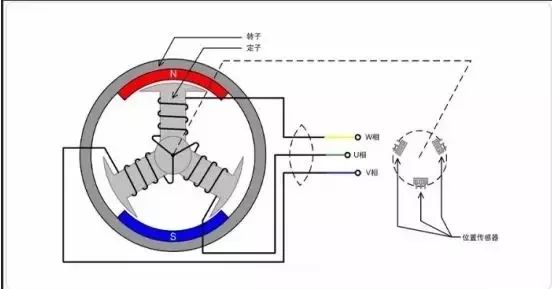L'histoire du moteur est un voyage passionnant qui s'étend sur deux siècles. C’est le moteur de la révolution industrielle et il a changé notre façon de vivre et de travailler.. Des débuts des moteurs à vapeur aux moteurs électriques modernes, l'évolution des moteurs a été un témoignage de l'ingéniosité humaine et de l'innovation.
Le premier appareil moteur connu était l'éolipile, inventé par Héros d'Alexandrie au premier siècle après JC. Il s'agissait d'un appareil fonctionnant à la vapeur qui utilisait la force de la vapeur pour faire tourner une sphère.. Cependant, ce n'est qu'au XVIIIe siècle que la première machine à vapeur pratique a été développée. Dans 1765, James Watt a développé une machine à vapeur améliorée, plus efficace et pouvant être utilisée pour alimenter des machines.. Ce fut le début de la révolution industrielle et de l'utilisation de moteurs à vapeur dans les usines..
Le prochain développement majeur dans la technologie des moteurs est venu avec l’invention du moteur à combustion interne.. Dans 1860, Étienne Lenoir a développé le premier moteur à combustion interne pratique, qui utilisait un mélange de gaz et d'air pour produire de l'électricité. Cependant, ce n'est que jusqu'à ce que 1876 que Nikolaus Otto a développé le premier moteur à combustion interne à quatre temps, qui est encore aujourd’hui le moteur le plus couramment utilisé dans les voitures et autres véhicules.
Le début du XXe siècle a vu le développement des moteurs électriques, ce qui révolutionnerait la façon dont nous alimentons les machines. Dans 1873, Zenobe Gramme a développé le premier moteur électrique pratique, qui utilisait un électro-aimant pour produire un mouvement de rotation. Cela a été rapidement suivi par le développement du courant alternatif. (CA) moteur de Nikola Tesla en 1887. Le moteur à courant alternatif était plus efficace et pouvait être utilisé pour une gamme d'applications plus large que le courant continu existant. (CC) moteurs.
Le développement des moteurs électriques a également conduit au développement des véhicules électriques.. Dans 1834, Thomas Davenport a construit la première voiture électrique, qui était propulsé par un moteur électrique primitif. Cependant, ce n'est qu'au début du 20e siècle que les voitures électriques sont devenues plus courantes. Dans 1900, les voitures électriques représentaient environ un tiers de toutes les voitures en circulation aux États-Unis. Cependant, le développement du moteur à combustion interne et la disponibilité d'un pétrole bon marché ont entraîné un déclin des véhicules électriques.
Au cours des dernières années, il y a eu un regain d'intérêt pour les véhicules électriques en raison des préoccupations concernant le changement climatique et l'environnement. Les progrès de la technologie des batteries ont rendu les voitures électriques plus pratiques et plus abordables, et de nombreux grands constructeurs automobiles développent désormais des véhicules électriques.
L’avenir de la technologie automobile s’annonce prometteur, avec les progrès continus des moteurs électriques et le développement de nouvelles technologies comme les piles à combustible à hydrogène. Ces technologies ont le potentiel de transformer notre façon de vivre et de travailler, rendre les transports plus durables et réduire notre dépendance aux combustibles fossiles.
En conclusion, l'histoire du moteur est une histoire d'innovation et de progrès. Des débuts des moteurs à vapeur aux moteurs électriques modernes, l'évolution des moteurs a changé le monde et notre mode de vie. Alors que nous continuons à développer de nouvelles technologies, nous pouvons espérer un avenir où les moteurs seront encore plus efficaces, durable, et transformateur.
 Fabricant de dépoussiéreurs électriques en Chine – Kinzir
Fabricant de dépoussiéreurs électriques en Chine – Kinzir